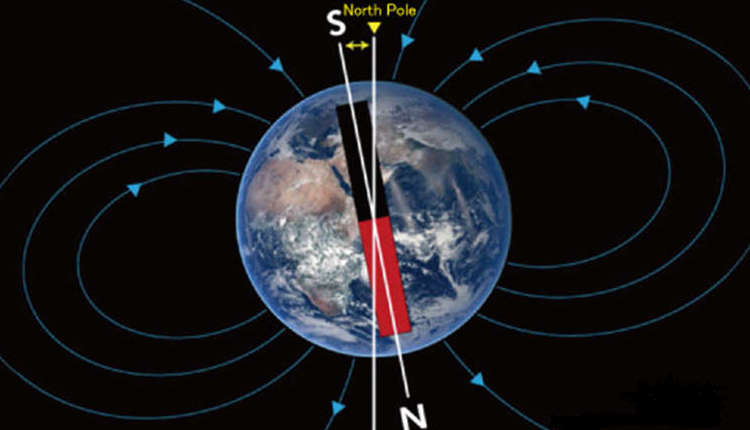- The geomagnetic field is another name for the earth’s magnetic field.
- Geomagnetic sensors, often known as electronic compasses, are devices that can sense the Earth’s magnetic field.
- Geomagnetic sensors can detect the geomagnetic field and determine its direction.

- Two-axis (X and Y) and three-axis devices including a Z axis that monitors the magnetic force in that direction are both used in geomagnetic sensors.
- Only the X and Y axes are employed in simple compasses because slope (inclination) is not a factor. The results of the three axes from the geomagnetic sensor must be combined with an accelerometer to correct the compass when tilted in the right direction.
- The distribution chart of the X and Y readings when the geomagnetic sensor is rotated horizontally is shown in the image below.
Various Types of Magnetic Sensors
- A magnetic sensor is a sensor capable of measuring the magnitude and direction of a magnetic field.
- A variety of sensors exist depending on the purpose, but the following are typical examples.
Hall Sensor
- A sensor that measures the magnetic flux density using the Hall effect and outputs a voltage proportional to the magnetic flux density is called a Hall sensor.
- It is easy to use and mainly adopted for contactless switch applications such as open/close detection of doors and notebook PCs.
MR Sensor
- An MR (Magnetoresistive) sensor measures field strength through changes in individual electrical resistors based on the magnetic field.
- This type of magnetic sensor is used quite frequently due to its higher sensitivity and lower power consumption than Hall sensors. In addition to geomagnetic detection in e-compasses, MR sensors are used for applications such as motor rotation and position detection.
MI Sensor
- An MI (Magneto-Impedance) sensor is a next-generation magnetic sensor that takes advantage of the magneto-impedance effects of a special amorphous wire.
- It features more than 10,000 times the sensitivity of Hall sensors, allowing measurement of minute variations in the geomagnetic field with high accuracy.
- It is ideal for applications requiring high sensitivity, such as indoor positioning, metal foreign object detection, and ultra-low-current azimuth detection (e-compass).